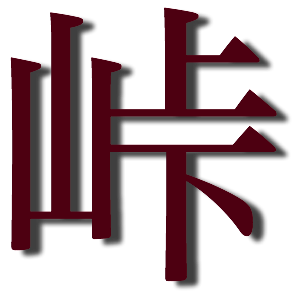
Si la majorité des kanjis ont été inventés en Chine, comme toujours quand on parle de langues humaines, ce n’est pas une règle absolue, il y a des exceptions. Le
Chose amusante, le mot tōge est en usage limité en anglais, ou il signifie un type de course automobile qui a lieu dans un col, et qui semble être apparu au Japon.
While the majority of kanjis have been invented in Japan, this is no rule. As with all things related to human languages, there are exceptions. The kanji 峠Tōge falls into this category. It is a japanese invention and has therefore no ON reading. It is quite a logical kanji, le left radical is mountain (山) and the right part is composed by the upper (上) and lower elements (下) on the right side. An elegant way to express a pass, which is both a minimum point (of the mountain range), and a maximum point (of the road). The amusing thing is, the word tōge is in limited use in english. It means a type of car racing which takes place in a mountain pass and seems to have appeared in Japan.
| Kanji | Prononciation Kun | Prononciation ON | Signification | Note | Henshall |
|---|---|---|---|---|---|
| 峠 |
とうげtōge
|
Col, Crète, Crise, Apogée | 1663 |